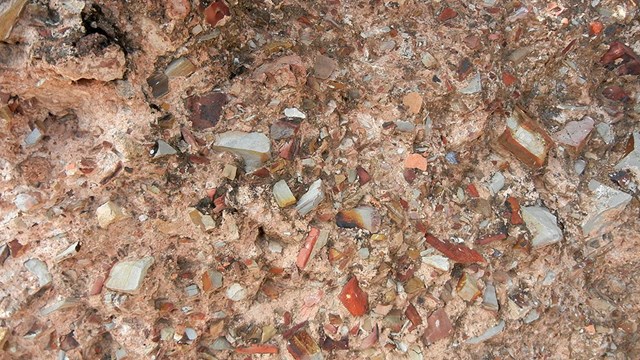
NPS Photo/ E. Schreiner Situated in the northeast Sonoran Desert amongst rugged terrain, Tonto National Monument preserves a wide variety of natural resources. The surrounding mountains, built by uplifted sedimentary layers, are continually being shaped through erosion and weathering. From the valley to the mountain tops, through open areas, nestled in canyons, and hidden among washes are different local environments, each with their own community of plants and animals. This tremendous diversity and interconnection of life is what forms the Sonoran Desert. This area of the desert experiences hot summers. Both people and wildlife are more active during the cooler morning and evening hours. During cool winters many animals are visible during the day. Even with two rainy seasons, the average rainfall is only fifteen inches. Storms entering the valley don't always leave behind moisture.
At Tonto National Monument and 10 other southwestern parks, the Sonoran Desert Network (SODN) conducts long-term inventory, monitoring, and reporting on key park resources. They assess the condition of park ecosystems and develop a stronger scientific basis for stewardship and management of natural resources. At Tonto, the network monitors air quality, climate, exotic plants, groundwater, landbirds, seeps, springs, tinajas, terrestrial vegetation, soils, and washes. Through the play of light and shadow, vistas change -- hour by hour, season by season. Within the dwellings, or looking out over the valley and steep slopes of surrounding mountains, the ever-changing scenes emphasize the need to guard the resources of this desert environment. 
Plants
Tonto National Monument supports a high diversity of flora. 
Animals
Tonto National Monument is home to over 230 species of animals. 
Natural Features & Ecosystems
Many environmental features made the Tonto Basin an appealing place for the Salado people. 
Wildland Fire
The Sonoran Desert did not evolve with large-scale wildland fire. |
Last updated: May 25, 2022
